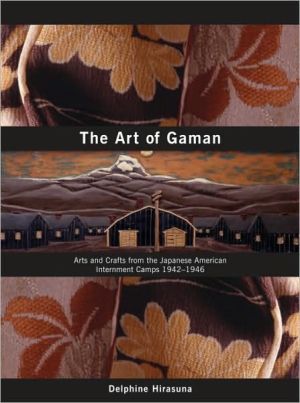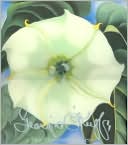Art of Gaman: Arts & Crafts from the Japanese-American Interment Camps
In 1942, Executive Order 9066 mandated the incarceration of 110,000 Japanese Americans, including men, women, children, the elderly, and the infirm, for the duration of the war. Allowed only what they could carry, they were given just a few days to settle their affairs and report to assembly centers. Businesses were lost, personal property was stolen or vandalized, and lives were shattered. The Japanese word gaman means "enduring what seems unbearable with dignity and grace. "Imprisoned in...
Search in google:
In 1942, Executive Order 9066 mandated the incarceration of 110,000 Japanese Americans, including men, women, children, the elderly, and the infirm, for the duration of the war. Allowed only what they could carry, they were given just a few days to settle their affairs and report to assembly centers. Businesses were lost, personal property was stolen or vandalized, and lives were shattered. The Japanese word gaman means "enduring what seems unbearable with dignity and grace. "Imprisoned in remote camps surrounded by barbed wire and guarded by soldiers with machine guns, the internees sought courage and solace in art. Using found materials at first and later what they could order by catalog, they whittled and carved, painted and etched, stitched and crocheted. What they created is a celebration of the nobility of the human spirit under adversity. THE ART OF GAMAN presents more than 150 examples of art created by internees, along with a history of the camps.Reviews". . . demonstrates the poignancy of the internment experience and the strength of the human spirit."-Alaska Airlines MagazinePublishers WeeklyFlowerlike brooches delicately made from tiny seashells; a large vanity table crafted from persimmon wood; intricately carved slate teapots; elegant dolls sewn from old kimono fabric. These are just some of the gorgeous arts and crafts presented in this moving, full-color volume by Hirasuna (Long May She Wave, etc.). All of them were made by Japanese-Americans confined in internment camps during WWII. "The objects that [internees] made from scrap and found materials are testaments to their perseverance, their resourcefulness, their spirit and humanity," Hirasuna writes. As such, they are "a physical manifestation of the art of gaman"-the art of "enduring the seemingly unbearable with patience and dignity." Certainly, the treatment Japanese-Americans received at the hands of the U.S. government was unjustifiable. In 1942, some 120,000 of them were forced to move into shoddily constructed camps located in some of the most barren areas of the western United States. They were given only one week to settle their affairs and allowed to bring with them only what goods they could carry, with the result that predatory merchants bought most of their property for a pittance and many of the families lost their homes. Trapped in the camps with only cots for furniture, the internees began their crafts from necessity, constructing rough-hewn tables, chairs, bureaus and woodworking tools from found materials. But as their skill progressed and their confinement stretched from one year to four, they began to produce objects of startling elegance and beauty. Hirasuna's exceptional volume give fair treatment to both the depressing conditions of the camp and the ingenuity and fortitude that its residents mustered to survive it. (Nov.) Copyright 2005 Reed Business Information.
\ Publishers WeeklyFlowerlike brooches delicately made from tiny seashells; a large vanity table crafted from persimmon wood; intricately carved slate teapots; elegant dolls sewn from old kimono fabric. These are just some of the gorgeous arts and crafts presented in this moving, full-color volume by Hirasuna (Long May She Wave, etc.). All of them were made by Japanese-Americans confined in internment camps during WWII. "The objects that [internees] made from scrap and found materials are testaments to their perseverance, their resourcefulness, their spirit and humanity," Hirasuna writes. As such, they are "a physical manifestation of the art of gaman"-the art of "enduring the seemingly unbearable with patience and dignity." Certainly, the treatment Japanese-Americans received at the hands of the U.S. government was unjustifiable. In 1942, some 120,000 of them were forced to move into shoddily constructed camps located in some of the most barren areas of the western United States. They were given only one week to settle their affairs and allowed to bring with them only what goods they could carry, with the result that predatory merchants bought most of their property for a pittance and many of the families lost their homes. Trapped in the camps with only cots for furniture, the internees began their crafts from necessity, constructing rough-hewn tables, chairs, bureaus and woodworking tools from found materials. But as their skill progressed and their confinement stretched from one year to four, they began to produce objects of startling elegance and beauty. Hirasuna's exceptional volume give fair treatment to both the depressing conditions of the camp and the ingenuity and fortitude that its residents mustered to survive it. (Nov.) Copyright 2005 Reed Business Information.\ \








